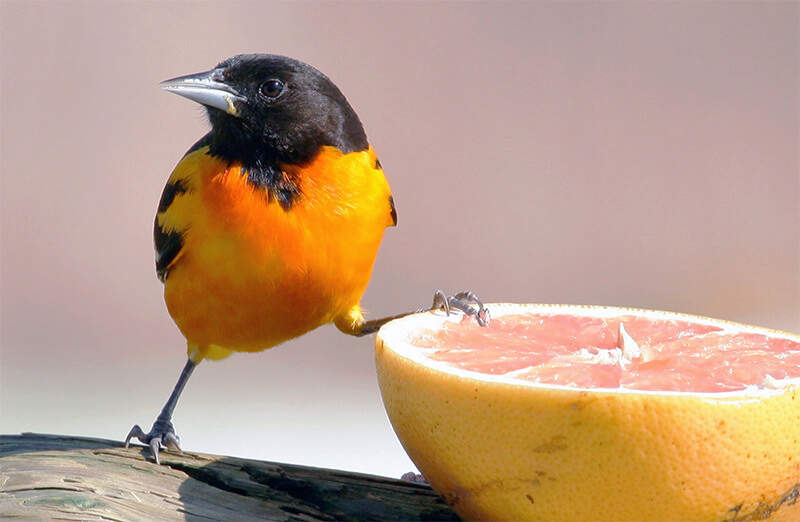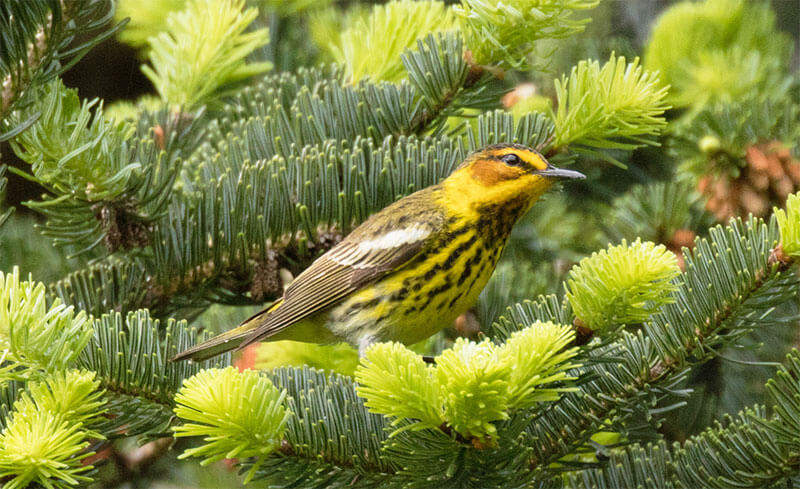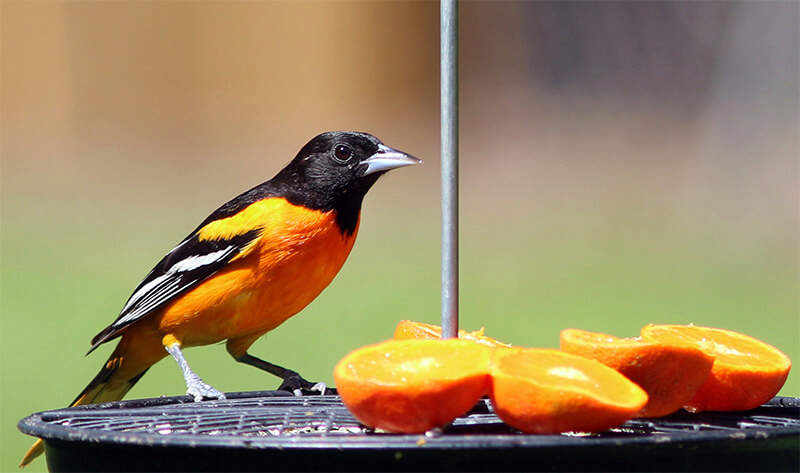Feeding Birds: Jelly & Fresh Fruit
Birds that feed on fruits in the wild can often be enticed to feeding stations for fruits and jelly. This is thrilling for those of us who love to watch birds, and can be beneficial for the birds, too, especially during migration during cold snaps.
Most fruit-eating birds aren’t fed regularly in America, so many individuals won’t recognize fruit or jelly in feeders as food. Orioles do normally recognize feeders, and once they start visiting, other fruit-eaters may take notice, especially during bad weather when they can’t find natural food. Unless you’re lucky, you’re not likely to get too many birds at fruit, but the ones that will appear will be beautiful.

Red-bellied Woodpecker
Cutting oranges in half and placing them on a platform feeder or impaled on a special orange feeder will draw orioles, and often other birds as well.
Fresh grapes, bananas, cherries, and berries may all be taken by orioles, robins, Cape May Warblers, and other birds with a sweet beak. You can use fresh fruit or frozen, as long as it isn’t frozen in juices. Cutting larger fruits into bite-sized pieces can make them more desirable. Offer them in a washable bowl on a platform feeder or flat deck railing—don’t put anything that can get so sticky onto a wooden feeder or anything else that is hard to wash.

Baltimore Oriole
Grape jelly can also be set out in bowls or in special feeders designed for it, but again, it gets sticky and moldy, so make sure whatever you offer it in is easily washed, and make sure to clean it often. Make sure the jelly doesn’t have any artificial sweeteners. Jelly very quickly gets sticky, so never offer it in large quantities. Small spoonfuls spaced in a bowl or in tiny containers are the best way to offer jelly.

Cape May Warbler
The sugar content of jelly is far higher than that of natural fruits, and studies haven’t confirmed that it’s good for birds as a regular component of their diet. It’s probably fine to offer jelly to nesting birds—that may help boost adult orioles’ energy levels as they’re scrambling to find insects for their nestlings—but close down the feeder after the young fledge if the parents are bringing them to jelly more than once or twice a day. Growing young birds need high protein, but like human children prefer sweets to good nutrition.

Keeping ants, wasps, and bees at bay is a crucial issue that keeps many from offering fruits and jellies. Suspending a feeder with an ant moat will keep them out of it, but bees and wasps are much trickier to deal with. That’s a good reason to limit offering these treats to spring migration, when the weather is still cool and most of them aren’t yet active enough to discover feeders.





